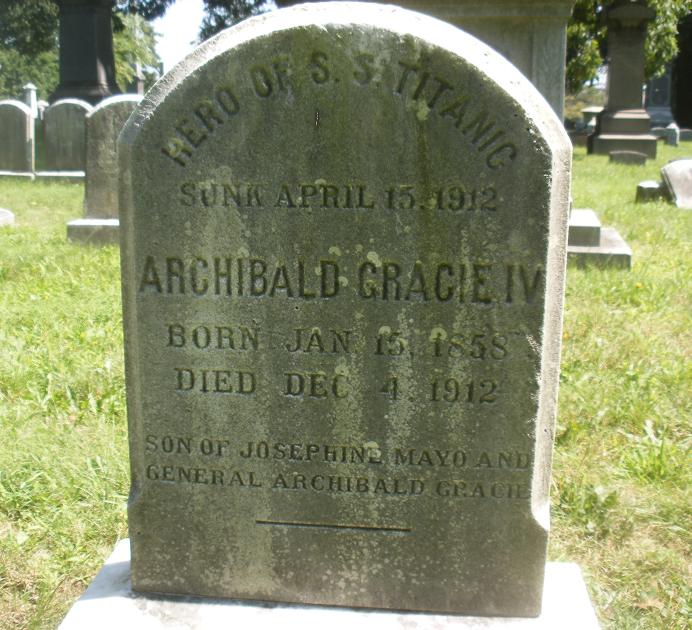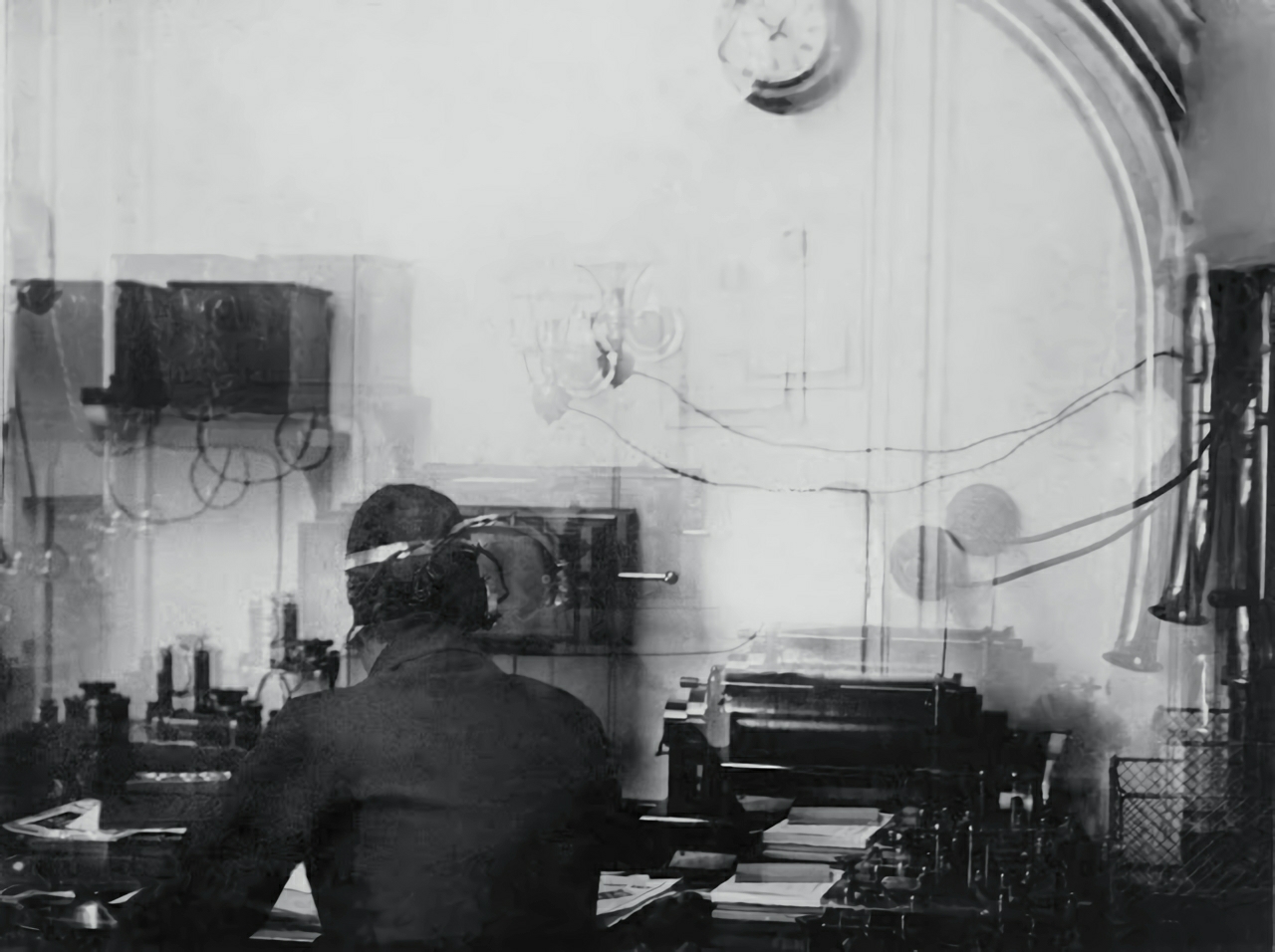|
Archibald Gracie IV
Archibald Gracie IV (January 15, 1858 – December 4, 1912) was an American writer, soldier, amateur historian, real estate investor, and survivor of the sinking of RMS ''Titanic''. Gracie survived the sinking by climbing aboard an overturned collapsible lifeboat and wrote a popular book about the disaster, which is still in print today. He never recovered from his ordeal and died less than eight months after the sinking, becoming the first adult survivor to die. Early life Archibald Gracie was born in Mobile, Alabama, a member of the wealthy Scottish-American Gracie family of New York City. He was a namesake and direct descendant of Archibald Gracie, who had built Gracie Mansion, the current official residence of the mayor of New York City, in 1799. His father, Archibald Gracie III, had been an officer with the Confederate States Army during the American Civil War; in 1862, he was promoted to brigadier general. In 1863, the elder Gracie served at the Battle of Chickamauga; he ... [...More Info...] [...Related Items...] OR: [Wikipedia] [Google] [Baidu] |
Mobile, Alabama
Mobile ( , ) is a city and the county seat of Mobile County, Alabama, United States. The population within the city limits was 187,041 at the 2020 United States census, 2020 census, down from 195,111 at the 2010 United States census, 2010 census. It is the fourth-most-populous city in Alabama, after Huntsville, Alabama, Huntsville, Birmingham, Alabama, Birmingham, and Montgomery, Alabama, Montgomery. Alabama's only saltwater port, Mobile is located on the Mobile River at the head of Mobile Bay on the north-central Gulf Coast. The Port of Mobile has always played a key role in the economic health of the city, beginning with the settlement as an important trading center between the French colonization of the Americas, French colonists and Native Americans in the United States, Native Americans, down to its current role as the 12th-largest port in the United States.Drechsel, Emanuel. ''Mobilian Jargon: Linguistic and Sociohistorical Aspects of a Native American Pidgin''. New York: ... [...More Info...] [...Related Items...] OR: [Wikipedia] [Google] [Baidu] |
Battle Of Chickamauga
The Battle of Chickamauga, fought on September 19–20, 1863, between United States, U.S. and Confederate States of America, Confederate forces in the American Civil War, marked the end of a Union Army, Union offensive, the Chickamauga Campaign, in southeastern Tennessee and northwestern Georgia (U.S. state), Georgia. It was the first major battle of the war fought in Georgia, the most significant Union defeat in the Western Theater of the American Civil War, Western Theater, and involved the second-highest number of casualties after the Battle of Gettysburg. The battle was fought between the Army of the Cumberland under major general (United States), Maj. Gen. William Rosecrans and the Confederate States Army, Confederate Army of Tennessee under General (CSA), Gen. Braxton Bragg, and was named for Chickamauga Creek. The West Chickamauga Creek meanders near and forms the southeast boundary of the battle area and the park in northwest Georgia. (The South Chickamauga ultimately fl ... [...More Info...] [...Related Items...] OR: [Wikipedia] [Google] [Baidu] |
Harold Bride
Harold Sydney Bride (11 January 1890 – 29 April 1956) was a British merchant seaman and the junior wireless officer on the ocean liner RMS ''Titanic'' during its ill-fated maiden voyage. After the ''Titanic'' struck an iceberg at 11:40 pm 14 April 1912, Bride and his senior colleague Jack Phillips were responsible for relaying CQD messages (later SOS at Captain Edward Smith's urging) to ships in the vicinity, which led to the survivors being picked up by the RMS ''Carpathia''. The men remained at their posts until the ship's power was almost completely out. Bride was washed off the ship as the boat deck flooded, but managed to scramble onto the upturned lifeboat Collapsible 'B', and was rescued by the ''Carpathia'' later in the morning. Despite being injured, he helped Harold Cottam, the ''Carpathia'''s wireless operator and a personal friend of his, transmit survivor lists and personal messages from the ship. Early history Harold Bride was born in Nunhead, London, Engl ... [...More Info...] [...Related Items...] OR: [Wikipedia] [Google] [Baidu] |
Keel
The keel is the bottom-most longitudinal structural element on a vessel. On some sailboats, it may have a hydrodynamic and counterbalancing purpose, as well. As the laying down of the keel is the initial step in the construction of a ship, in British and American shipbuilding traditions the construction is dated from this event. Etymology The word "keel" comes from Old English , Old Norse , = "ship" or "keel". It has the distinction of being regarded by some scholars as the first word in the English language recorded in writing, having been recorded by Gildas in his 6th century Latin work ''De Excidio et Conquestu Britanniae'', under the spelling ''cyulae'' (he was referring to the three ships that the Saxons first arrived in). is the Latin word for "keel" and is the origin of the term careen (to clean a keel and the hull in general, often by rolling the ship on its side). An example of this use is Careening Cove, a suburb of Sydney, Australia, where careening was carried out ... [...More Info...] [...Related Items...] OR: [Wikipedia] [Google] [Baidu] |
Undertow (water Waves)
In physical oceanography, undertow is the undercurrent that is moving offshore when waves are approaching the shore. Undertow is a natural and universal feature for almost any large body of water: it is a return flow compensating for the onshore-directed average transport of water by the waves in the zone above the wave troughs. The undertow's flow velocities are generally strongest in the surf zone, where the water is shallow and the waves are high due to shoaling. In popular usage, the word "undertow" is often misapplied to rip currents. An undertow occurs everywhere underneath shore-approaching waves, whereas rip currents are localized narrow offshore currents occurring at certain locations along the coast. Oceanography An "undertow" is a steady, offshore-directed compensation flow, which occurs below waves near the shore. Physically, nearshore, the wave-induced mass flux between wave crest and trough is onshore directed. This mass transport is localized in the upper ... [...More Info...] [...Related Items...] OR: [Wikipedia] [Google] [Baidu] |
Charles Lightoller
Charles Herbert Lightoller, (30 March 1874 – 8 December 1952) was a British mariner and naval officer. He was the second officer on board the and the most senior member of the crew to survive the ''Titanic'' disaster. As the officer in charge of loading passengers into lifeboats on the port side, Lightoller strictly enforced the women and children only protocol, not allowing any male passengers to board the lifeboats unless they were needed as auxiliary seamen. Lightoller served as a commanding officer in the Royal Navy during World War I and was twice decorated for gallantry. During World War II, in retirement, he voluntarily provided his personal yacht, named the ''Sundowner'' and sailed her as one of the " little ships" that played a part in the Dunkirk evacuation. Early life Charles Herbert Lightoller was born in Chorley, Lancashire, on 30 March 1874, into a family that had operated cotton-spinning mills in Lancashire since the late 18th century. His mother, Sarah Jan ... [...More Info...] [...Related Items...] OR: [Wikipedia] [Google] [Baidu] |
Norfolk Jacket
A Norfolk jacket is a loose, belted, single-breasted tweed jacket with box pleats on the back and front, with a belt or half-belt. It was originally designed as a shooting coat that did not bind when the elbow was raised to fire. Its origin is uncertain but it may have been named after Coke of Norfolk, the Duke of Norfolk, or after the county of Norfolk. It was made fashionable after the 1860s in the sporting circle of the Prince of Wales, later Edward VII, whose country residence was Sandringham House in Norfolk. The style was long popular for boys' jackets and suits, and is still used in some (primarily military and police) uniforms. History There have been several theories regarding the origin of the Norfolk jacket, although none are supported by much evidence. The first theory is that the jacket originated with Henry Fitzalan-Howard, 15th Duke of Norfolk, who invented it for use as a hunting coat in the late 1860s. According to this theory, the jacket was then discovered by Ed ... [...More Info...] [...Related Items...] OR: [Wikipedia] [Google] [Baidu] |
Squash (sport)
Squash is a racket-and- ball sport played by two or four players in a four-walled court with a small, hollow, rubber ball. The players alternate in striking the ball with their rackets onto the playable surfaces of the four walls of the court. The objective of the game is to hit the ball in such a way that the opponent is not able to play a valid return. There are about 20 million people who play squash regularly world-wide in over 185 countries. The governing body of Squash, the World Squash Federation (WSF), is recognized by the International Olympic Committee (IOC), but the sport is not part of the Olympic Games, despite a number of applications. Supporters continue to lobby for its incorporation in a future Olympic program. The Professional Squash Association (PSA) organizes the pro tour. History Squash has its origins in the older game of rackets which was played in London's prisons in the 19th century. Later, around 1830, boys at Harrow School noticed that a punctured b ... [...More Info...] [...Related Items...] OR: [Wikipedia] [Google] [Baidu] |
Isidor Straus
Isidor Straus (February 6, 1845 – April 15, 1912) was a Bavarian-born American Jewish businessman, politician and co-owner of Macy's department store with his brother Nathan. He also served for just over a year as a member of the United States House of Representatives. He died with his wife, Ida, in the sinking of the passenger ship RMS ''Titanic''. Early life Straus was born into a Jewish family in Otterberg in the former Palatinate, then ruled by the Kingdom of Bavaria. He was the first of five children of Lazarus Straus (1809–1898) and his second wife and first cousin, Sara Straus (1823–1876). His siblings were Hermine (1846–1922), Nathan (1848–1931), Jakob Otto (1849–1851) and Oscar Solomon Straus (1850–1926). In 1854 he and his family immigrated to the United States, following his father, Lazarus, who immigrated two years before. They settled first in Columbus, Georgia, and then lived in Talbotton, Georgia, where their house still exists today. He was pr ... [...More Info...] [...Related Items...] OR: [Wikipedia] [Google] [Baidu] |
Helen Churchill Candee
Helen Churchill Candee (October 5, 1858 – August 23, 1949) was an American author, journalist, interior decorator, feminist, and geographer. Today, she is best known as a survivor of the sinking of RMS ''Titanic'' in 1912, and for her later work as a travel writer and explorer of southeast Asia. Early life Helen was born Helen Churchill Hungerford, the daughter of New York City merchant Henry and Mary Elizabeth (Hungerford) Churchill. She spent most of her childhood in Connecticut. She married Edward Candee of Norwalk, Connecticut and had two children by him, Edith and Harold. After her abusive husband abandoned the family, Helen Candee supported herself and children as a writer for popular magazines such as ''Scribner's'' and ''The Ladies' Home Journal''. She initially wrote on the subjects most familiar to her—genteel etiquette and household management—but soon branched into other topics such as child care, education, and women's rights. For several years she reside ... [...More Info...] [...Related Items...] OR: [Wikipedia] [Google] [Baidu] |
Southampton
Southampton () is a port city in the ceremonial county of Hampshire in southern England. It is located approximately south-west of London and west of Portsmouth. The city forms part of the South Hampshire built-up area, which also covers Portsmouth and the towns of Havant, Waterlooville, Eastleigh, Fareham and Gosport. A major port, and close to the New Forest, it lies at the northernmost point of Southampton Water, at the confluence of the River Test and Itchen, with the River Hamble joining to the south. Southampton is classified as a Medium-Port City . Southampton was the departure point for the and home to 500 of the people who perished on board. The Spitfire was built in the city and Southampton has a strong association with the ''Mayflower'', being the departure point before the vessel was forced to return to Plymouth. In the past century, the city was one of Europe's main ports for ocean liners and more recently, Southampton is known as the home port of some of ... [...More Info...] [...Related Items...] OR: [Wikipedia] [Google] [Baidu] |
7th New York Militia
The 7th Regiment of the New York Militia, aka the "Silk Stocking" regiment, was an infantry regiment in the Union Army during the American Civil War. Also known as the "Blue-Bloods" due to the disproportionate number of its members who were part of New York City's social elite, the 7th Militia was a pre-war New York Militia unit that was mustered into federal service for the Civil War. Creation The regiment, located in New York City, (companies, A, B, C and D), was organized during the furore created by the firing of British at American vessels off Sandy Hook in April 1806, as the 1st, 2nd, 3rd and 4th companies. On 25 June 1861 they were officially reorganized by the state as part of the uniformed militia of the state, and attached to the First Brigade of the Battalion of Artillery commanded by Maj. Andrew Sitcher. On 5 April 1807, the battalion became the 2nd Battalion, 3rd Regiment of Artillery, New York State Militia.The New York Historical Society (2003) "Guide to the Reco ... [...More Info...] [...Related Items...] OR: [Wikipedia] [Google] [Baidu] |






